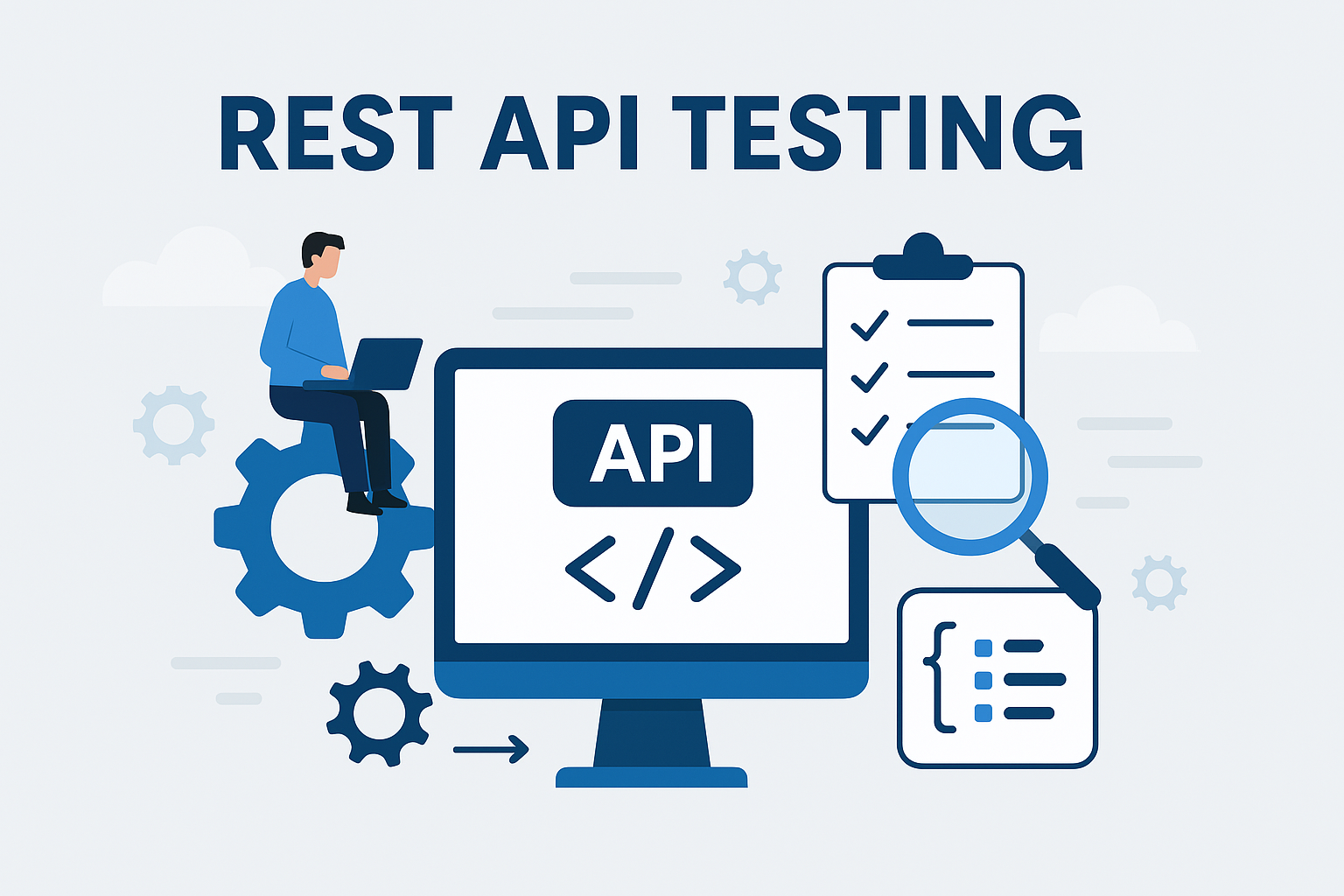REST API Testing: Challenges, Deployment Strategies, and the Power of Fuzzing
 QA Genesis
QA Genesis
The REST API Testing Challenges
REST APIs are no simple thing to test for quality. They're inherently complicated—some parts of code are difficult to reach, endpoints may encompass an inordinate number of parameter combinations, and they tend to interface with lots of external systems. Manually testing REST APIs for vulnerabilities, instability, or potential security issues is akin to looking for a needle in a haystack.
In order to deal with such complexity, development teams more and more depend on automated testing. Following are six major challenges most frequently encountered in REST API testing:
1. Initial Documentation of a REST API
REST APIs consist of many components, such as request methods, URIs, and query parameters, each with several possible combinations. These must be tested since certain combinations may result in faults. Documentation schemas such as OpenAPI may not necessarily reveal all the parameters, leaving coverage gaps and gaps in understanding.
2. Testing REST API Parameters
One of the more challenging aspects of REST API testing is parameter validation. Incorrect validation can lead to issues such as the wrong data types or values that are outside the allowed ranges. Having good validation in place prevents these issues from falling through the cracks.
3. Evolving the API and Keeping the Documentation Up to Date
The documentation of an API serves as its formal contract—it specifies how the API handles requests and responses. When changes do occur, such as introducing new parameters or adjusting response formats, the documentation is updated accordingly. Furthermore, breaking changes need to be handled in a way so as not to interfere with currently existing integrations.
4. Testing REST API Call Sequences (Stateful Testing)
Accurate testing often requires API calls to be made in a specific sequence. Verifying that calls are executed in the correct order is essential for uncovering issues related to concurrency or improper handling of state transitions. Such issues are common in REST APIs and demand rigorous testing practices.
5. REST API Testing Set-Up
Setting up automated test environments can be one of the most time-consuming parts of the testing process, particularly for larger projects. Enterprise testing solutions not owned by the development team can be costly and hard to maintain. Testing early, as close to the development phase as possible, helps reduce late stage issues and lowers set-up overhead.
6. Error Reporting for REST APIs
When testing APIs externally without access to internal code, identifying and reproducing errors can be especially challenging. Often, the state of the system affects the outcome, making issues hard to track. Code coverage–guided testing helps solve this problem by highlighting the exact locations where errors occur, providing both traceability and easier reproduction.
How to Automate Testing for REST APIs
Given the intricate structure of REST APIs, automation is one of the best ways to achieve consistent, secure, and stable performance. However, not all automation methods are equally effective.
Many teams rely on tools like Burp Suite or OWASP ZAP to test the final deployed API. These tools are typically used by QA or security teams rather than the original developers. While they automate the testing process to some degree, they still require substantial system knowledge and don’t leverage the developer’s deep understanding of the codebase. These tools are particularly useful for simulating attacks and spotting vulnerabilities but often rely on static inputs or heuristic guesses.
The real power lies in test automation from within the code itself. Internal testing tools can use source code visibility to eliminate irrelevant test parameters and focus on meaningful inputs. These tools are also aware of code coverage, enabling them to detect crashes and edge cases more effectively and quickly.
Code-aware testing solutions also provide richer reporting features, including code coverage mapping and clearer issue tracking. This approach proves especially valuable in large-scale microservices environments or growing systems where REST APIs are a core component of inter-service communication.
Testing Before Deploying vs After Deploying
When testing REST APIs, one of the most valuable distinctions to understand is the difference between pre-deployment and post-deployment testing. These stages may involve different environments: from a developer's local machine to internal staging environments, or even live production systems accessible to users.
Pre-deployment testing typically begins with unit tests, focusing on the core business logic and standard "happy path" scenarios. It's also where negative tests are most effective, as they can be performed in isolation and within a controlled local environment—keeping the number of variable combinations manageable.
In contrast, post-deployment testing carries higher risks and costs. While it is still necessary, relying solely on it should be avoided when pre-deployment testing can catch issues earlier. Ideally, both should complement each other to ensure a robust and stable REST API.
Advantages of Testing Before Deployment
Testing your APIs before they are deployed offers several benefits:
Early bug detection: Developers can write functional unit tests that directly validate business logic and API contracts, reducing the chances of bugs affecting end users or dependent teams.
Edge case coverage: Negative and edge case testing ensures the system behaves correctly under unexpected input scenarios, building greater reliability into the foundation of your services.
Faster execution: Mocked network connections significantly reduce test execution time, eliminating the typical network delays that bottleneck API testing.
Rapid feedback: Developers receive immediate feedback during development, reducing management overhead and turnaround time.
Fuzz testing is one pre-deployment approach that proves particularly effective. It uncovers critical issues in both business logic and the API layer by automatically generating a wide range of inputs including those that developers may not have considered. Fuzz testing empowers developers to take ownership of quality ("shift left") using familiar tools and frameworks, helping reduce the number of manually written test cases while ensuring continuous test coverage.
Fuzz Testing for REST APIs
One of the most powerful methods for automated REST API testing is feedback-based fuzzing. This advanced technique uses code instrumentation to monitor how test inputs travel through an API's logic. Based on that data, the fuzzer dynamically creates new test inputs to explore deeper and less-traveled code paths.
Modern fuzzing solutions can even be tailored to search for specific types of vulnerabilities and skip known obstacles. Because these tools can be seamlessly integrated into your CI/CD pipeline, developers can conduct continuous testing throughout the API lifecycle.
Running fuzz tests locally, before the service is deployed, offers massive advantages:
Increased speed: Without network latency, fuzzing can run up to 1000x faster compared to external test setups.
Enhanced relevance: It focuses on actual code execution paths, delivering more precise and meaningful test coverage.
Greater insight: Developers gain visibility into what parts of the code are being tested and where gaps remain.
Through feedback-based fuzzing from the initial development stage, teams are able to detect and resolve problems that might otherwise manifest while staging, production, or worst of all - by attackers or users.
Subscribe to my newsletter
Read articles from QA Genesis directly inside your inbox. Subscribe to the newsletter, and don't miss out.
Written by

QA Genesis
QA Genesis
QA Genesis is the leading provider of Quality Assurance (QA) services to many clients, including Fortune 500 companies and startups alike. Our team has been building quality into software, and we're committed to helping you. Founded in 2014, QA Genesis is an award-winning software testing company with 120+ employees and 200+ clients. We specialize in software testing and quality assurance services. We are an agile team with a worldwide presence. We are always ready to support your team with our agile approach and timely support.